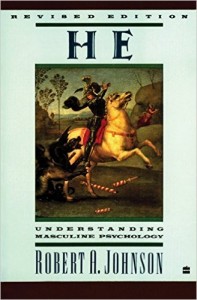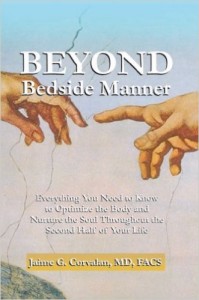– Dr. Jaime G. Corvalan, MD, FACS
The following is an extended excerpt of the First Sermon to the Dead by Dr. Carl Jung.
The First Sermon
The dead came back from Jerusalem, where they did not find what they were seeking. They asked admittance to me and demanded to be taught by me, and thus I taught them:
Hear Ye: I begin with nothing. Nothing is the same as fullness. In the endless state fullness is the same as emptiness. The Nothing is both empty and full. One may just as well state some other thing about the Nothing, namely that it is white or that it is black or that it exists or that it exists not. That which is endless and eternal has no qualities, because it has all qualities.
The Nothing, or fullness, is called by us the PLEROMA. In it thinking and being cease, because the eternal is without qualities. In it there is no one, for if anyone were, he would be differentiated from the Pleroma and would possess qualities which would distinguish him from the Pleroma.
In the Pleroma there is nothing and everything: it is not profitable to think about the Pleroma, for to do that would mean one’s dissolution.
The CREATED WORLD is not in the Pleroma, but in itself. The Pleroma is the beginning and end of the created world.
The Pleroma penetrates the created world as the sunlight penetrates the air everywhere. Although the Pleroma penetrates it completely, the created world has no part of it, just as an utterly transparent body does not become either dark or light in color as the result of the passage of light through it. We ourselves, however, are the Pleroma, so it is that the Pleroma is present within us. Even in the smallest point the Pleroma is present without any bounds, eternally and completely, for small and great are the qualities which are alien to the Pleroma.
The Pleroma is the nothingness which is everywhere complete and without end. It is because of this that I speak of the created world as a portion of the Pleroma, but only in an allegorical sense; for the Pleroma is not divided into portions, for it is nothingness. We, also, are the total Pleroma; for figuratively the Pleroma is an exceedingly small, hypothetical, even non-existent point within us, and also it is the limitless firmament of the cosmos about us. Why, however, do we discourse about the Pleroma, if it is the all, and also nothing?
I speak of it in order to begin somewhere, and also to remove from you the delusion that somewhere within or without there is something absolutely firm and definite. All things which are called definite and solid are but relative, for only that which is subject to change appears definite and solid.
The created world is subject to change. It is the only thing that is solid and definite, since it has qualities. In fact, the created world is itself but a quality.
We ask the question:
How did creation originate? Creatures indeed originated but not the created world itself, for the created world is a quality of the Pleroma, in the same way as the uncreated; eternal death is also a quality of the Pleroma. Creation is always and everywhere, and death is always and everywhere. The Pleroma possesses all: differentiation and non-differentiation.
Differentiation is creation.
The created world is indeed differentiated. Differentiation is the essence of the created world and for this reason the created also causes further differentiation. That is why man himself is a divider, inasmuch as his essence is also differentiation. That is why he distinguishes the qualities of the Pleroma, yea, those qualities which do not exist.
You say to me: What good is it then to talk about this, since it has been said that it is useless to think about the Pleroma?
I say these things to you in order to free you from the illusion that it is possible to think about the Pleroma. When you speak about the divisions of the Pleroma, we are speaking from the position of our own divisions, and we speak about our own differentiated state; but while we do this, we have in reality said nothing about the Pleroma.
However, it is necessary to talk about our own differentiation, for this enables us to discriminate sufficiently.
Our essence is differentiation. For this reason we must distinguish individual qualities.
You say: What harm does it not do to discriminate, for then we reach beyond the limits of our own being; we extend ourselves beyond the created world, and we fall into the undifferentiated state which is another quality of the Pleroma. We submerge into the Pleroma itself, and we cease to be created beings. This we become subject to dissolution and nothingness.
Such is the very death of the created being. We die to the extent that we fail to discriminate. For this reason the natural impulse of the created being is directed toward differentiation and toward the struggle against the ancient, pernicious state of sameness.
The natural tendency is called Principium Individuationis (Principle of Individuation).
This principle is indeed the essence of every created being.
From these things you may readily recognize why the undifferentiated principle and lack of discrimination are all a great danger to created beings.
For this reason we must be able to distinguish the qualities of the Pleroma.
Its qualities are the PAIRS OF OPPOSITES, such as:
the effective and the ineffective
fullness and emptiness
the living and the dead
light and dark
hot and cold
energy and matter
time and space
good and evil
the beautiful and the ugly
the one and the many
and so forth.
The pairs of opposites are the qualities of the Pleroma: they are also in reality non-existent because they cancel each other out.
Since we ourselves are the Pleroma, we also have these qualities present within us; inasmuch as the foundation of our being is differentiation, we possess these qualities in the name and under the sign of differentiation, which means:
First—that the qualities are in us differentiated from each other, and they are separated from each other, and thus they do not cancel each other out, rather they are in action. It is thus that we are the victims of the pairs of opposites. For in us the Pleroma is rent in two.
Second—the qualities belong to the Pleroma, and we can and should partake of them only in the name and under the sign of differentiation. We must separate ourselves from these qualities. In the Pleroma they cancel each other out; in us they do not. But if we know how to know ourselves as being apart from the pairs of opposites, then we have attained to salvation.
When we strive for the good and the beautiful, we thereby forget about our essential being, which is differentiation, and we are victimized by the qualities of the Pleroma which are the pairs of opposites. We strive to attain to the good and beautiful, but at the same time we also to the evil and the ugly, because in the Pleroma these are identical with the good and the beautiful. However, if we remain faithful to our nature, which is differentiation, we then differentiate ourselves from the good and the beautiful, and thus we have immediately differentiated ourselves from the evil and the ugly. It is only thus that we do not merge into the Pleroma, that is, into nothingness and dissolution.
You will object and say to me: Thou hast said that differentiation and sameness are also qualities of the Pleroma. How is it then that we strive for differentiation? Are we not then true to our natures and must we then also eventually be in the state of sameness, while we strive for differentiation?
What you should never forget is that the Pleroma has no qualities.
We are the ones who create these qualities through our thinking.
When you strive after differentiation or sameness or after other qualities, you strive after thoughts which flow to you from the Pleroma, namely thoughts about the non-existent qualities of the Pleroma.
While you run after these thoughts, you fall again into the Pleroma and arrive at differentiation and sameness at the same time. Not your thinking but your being is differentiation.
That is why you should not strive after differentiation and discrimination as you know these, but strive after your true nature.
If you would thus truly strive, you would not need to know anything about the Pleroma and its qualities, and still you would arrive at the true goal because of your nature.
However, because thinking alienates us from our true nature, therefore I must teach knowledge to you, with which you can keep your thinking under control.


